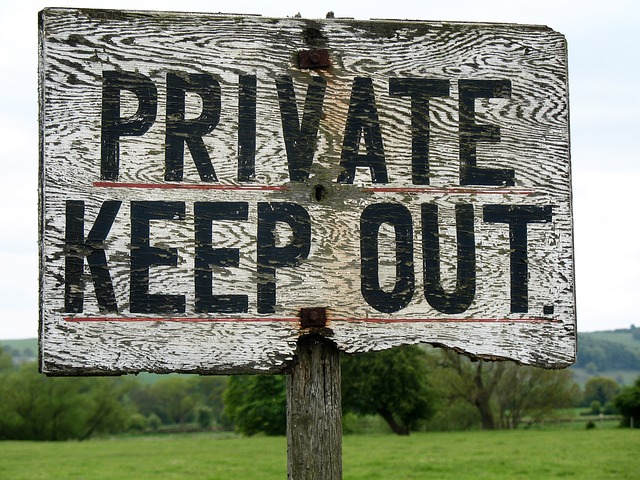
By Kurt Valentine, Staff Writer
The government can control the use of private property though regulations and zoning ordinances. The government can also take possession of private land through eminent domain. A private citizen can also take possession of another’s land through the legal doctrine of adverse possession.
Adverse possession is when someone occupies land that another person has title to with the intent to make it their own.[1] In Pennsylvania, the person asserting adverse possession must show the possession is actual, exclusive, visible, notorious, distinct, and hostile for 21 years.[2] There is a lot of overlap between the elements. An adverse possessor, for example, can show that their possession is actual, visible, and notorious by mowing the grass and parking their car on another’s property.[3]
In Pennsylvania, the courts broke the elements of adverse possession into three categories. An adverse possessor must show “actual, visible, notorious, exclusive possession; . . . continuous for 21 years; and [that] possession was hostile and adverse to the true owner’s title.”[4] The Pennsylvania Supreme Court ruled that the “hostile and adverse to the true owner’s title” element is implied when all the other elements are met.[5]
There is currently pending legislation to reduce the required time for adverse possession from 21 years to 10 years for property less than a half-acre that abuts real property.[6] The bill defines “real property” as property that is improved by a single-family dwelling.[7] The lot being adversely possessed has to be identified as a separate lot.[8] The bill’s intent is to reduce the time required for homeowners in subdivisions to claim title to unsold lots that abut their property.
On its face, the doctrine seems very unfair. There are four theories that support the doctrine of adverse possession.
First, it bars lawsuits on land that has not been used by the owner.[9] This protects the occupant from frivolous claims and encourages the productive use of land.[10] Second, adverse possession helps correct title defects.[11] A homeowner in Washington, for instance, was able to get the deed to the property his house was built on though adverse possession after a surveying error.[12] This error affected a group of continuous lots.[13] The land owners had their houses built on land that was owned by their neighbors to the east, and they had the deed to the land the neighbors to the west had their home built on.[14] Through adverse possession, the title defect was corrected.[15]
Third, adverse possession promotes land development.[16] In a capitalist system, the government wants to promote economic development. Adverse possession is a legal tool that “reallocates title from the idle owner to the industrious squatter.”[17] Finally, there is also a romantic notion called the personhood theory.[18] The personhood theory states that land someone used and enjoyed “takes root in [their] being and cannot be torn away without [them] resenting the act.”[19]
Adverse possession is a controversial doctrine, but it is well-established. It is difficult to justify rewarding a trespasser with title to someone else’s land. In Pennsylvania, statutory law provides an owner 21 years to eject an adverse possessor.[20] If an owner does not do so within this time, one has to question how much value they put on the property. If an occupant meets the elements of adverse possession for 21 years, they should be granted title to the land. It is clear that they value the land more than the true owner and should have certainty in title.
Sources
[1] https://en.oxforddictionaries.com/definition/us/adverse_possession
[2] Conneaut Lake Park, Inc. v. Klingensmith, 66 A.2d 828 (Pa. 1949).
[3] Brennan v. Manchester Crossings, 708 A.2d 815, 821 (Pa. Super. Ct. 1998).
[4] Neumann v. Walters, 39 Pa. D. & C.3d 312, 317 (Pa. Dist. & Cnty. Ct. 1981).
[5] Tioga Coal Co. v. Supermarkets General Corp., 546 A.2d 1, 4 (Pa. 1988).
[6] 2015 Bill Text PA H.B. 773.
[7] 2015 Bill Text PA H.B. 773(F).
[8] 2015 Bill Text PA H.B. 773(F).
[9] John G. Sprankling & Raymond R. Coletta, Property: A Contemporary Approach 98 (3d ed. 2015).
[10] John G. Sprankling & Raymond R. Coletta, Property: A Contemporary Approach 98 (3d ed. 2015).
[11] John G. Sprankling & Raymond R. Coletta, Property: A Contemporary Approach 99 (3d ed. 2015).
[12] Howard v. Kunto, 477 P.2d 210, 211-12 (Wash. Ct. App. 1970).
[13] Id. at 212.
[14] Id.
[15] Id. at 215.
[16] John G. Sprankling & Raymond R. Coletta, Property: A Contemporary Approach 99 (3d ed. 2015).
[17] John G. Sprankling & Raymond R. Coletta, Property: A Contemporary Approach 99 (3d ed. 2015).
[18] John G. Sprankling & Raymond R. Coletta, Property: A Contemporary Approach 99 (3d ed. 2015).
[19] John G. Sprankling & Raymond R. Coletta, Property: A Contemporary Approach 99 (3d ed. 2015).
[20] 42 Pa.C.S. § 5530(a)(1) (2016).